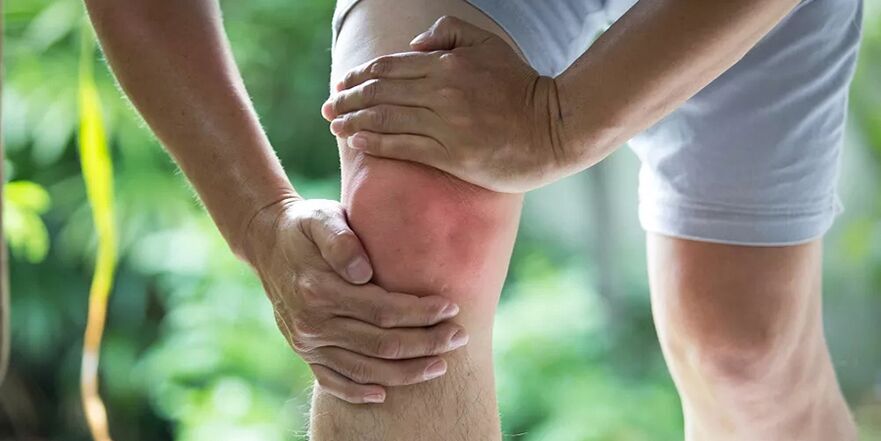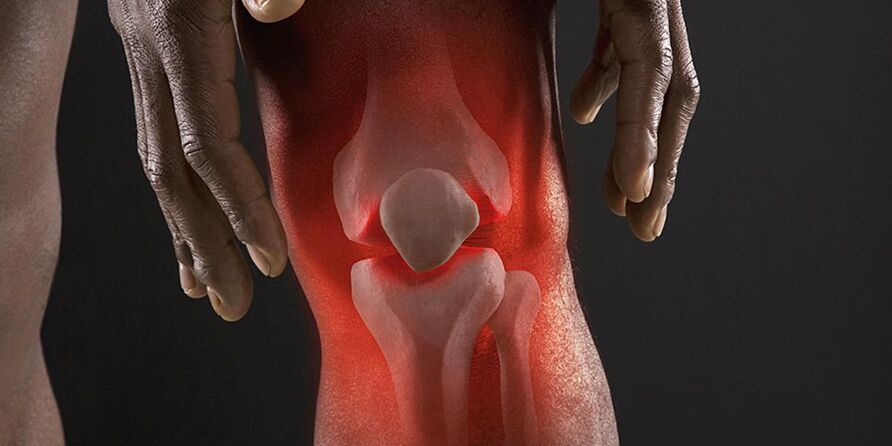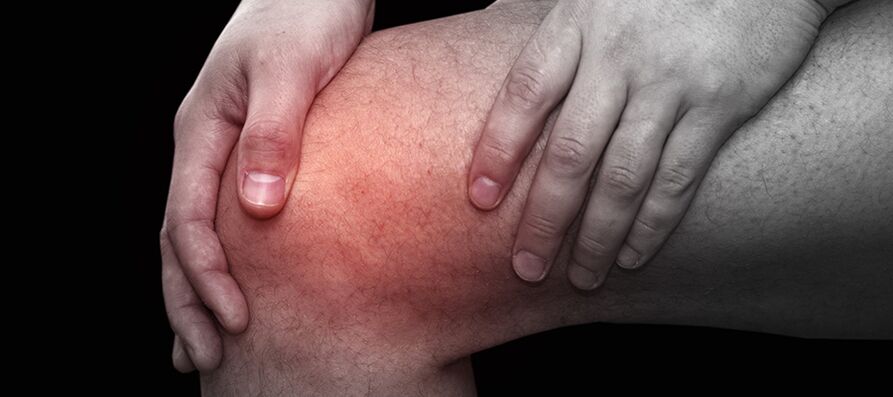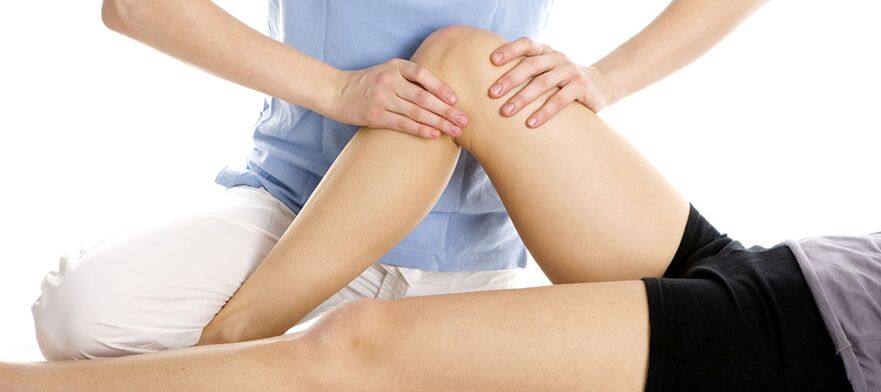
Knee arthritis (gonarthrosis) is a very common disease, second only to hip arthritis in incidence.
Statistics show that one in five people on earth suffers from joint disease (approximately 22%).There is a link between this pathology and a person's gender - women are twice as likely to develop the disease as men.If we talk about age, the risk group includes patients over 40 years of age.
Degenerative changes occur at the molecular level, but over time, when the disease begins to progress, damage to the cartilage tissue structure is observed.If treatment is not started promptly, there is a real danger of bone exposure and destruction of the cartilage itself.

Causes of knee arthritis
To understand the specifics of this disease, it is important to understand why knee joint disease occurs.It is important to understand that the knee joint is subjected to significant pressure from the weight of the human body every day.As people age, the natural wear and tear of tissues causes changes in the structure of the joints.This is why middle-aged and elderly people are most susceptible to this disease.
In addition, the following reasons may also cause knee joint disease:
- Damage and injury.These factors most often influence the development of the disease in its early stages.
- constant load.We are talking about participating in active sports despite contraindications and advanced age.
- Being overweight.This factor can negatively affect the condition of the meniscus.In addition, the pressure on the knee joint increases, which can trigger the development of the disease.
- Varicose veins of lower limbs.
- Poor metabolism.A lack of minerals can negatively affect cartilage condition.
- Arthritis and other specific inflammatory joint pathologies.
Symptoms of knee joint disease

The first stage of knee arthrosis is characterized by the presence of low-intensity pain.Often, a person takes no therapeutic action and ignores the body's initial signals.This condition can last for several years until it worsens.
A person may experience severe discomfort when trying to stand up after sitting for a long period of time.A similar feeling can occur when you wake up in the morning.
In addition to varying degrees of pain, the joints of the knee joint are also accompanied by the following symptoms:
- Burning sensation in lower limbs.The condition worsens when climbing stairs.
- Decreased muscle tone.
- Insufficient joint mobility.
- Feature compaction.
Specific symptoms depend on the stage of the disease.Obviously, the more severe the problem, the more obvious the pathological manifestations.
first degree arthropathy
Grade 1 knee arthritis is characterized by patients who are doing well and therefore may not feel any discomfort.The only things that may bother patients are limited mobility after waking up and fatigue in the lower limbs.
Pain is almost non-existent or mild.Diagnosis of the disease at this stage can only be made with the help of X-rays or MRI.The image shows a narrowing of the space between the joint surfaces, as well as slight irregularities in the cartilage.
Unfortunately, patients rarely seek help at this stage of the disease.Most people are used to not paying attention to some small problems, which often leads to worsening of the condition and rapid progression of the condition.
Second degree arthropathy
Second degree knee arthritis manifests itself more clearly.Pain occurs after any exertion or when directly lifting heavy objects.This condition disappears after rest, but the discomfort returns upon resumption of physical activity.
There are other symptoms associated with this stage:
- Feature compaction.It is very sharp and often accompanied by a painful sensation.
- Synovitis is an inflammation and swelling of the synovial membrane of a joint.
- Deformation.In the initial stages, swelling in the knee area is noticeable, but without proper treatment, the condition can worsen significantly.
- Insufficient range of motion in the knee joint.Patients experience basic problems bending or straightening their legs.
All of these symptoms can gradually worsen if left untreated.The joint gradually loses its properties and its structure begins to change, which becomes apparent through visual inspection.
third degree arthropathy
Grade 3 knee osteoarthritis is characterized by the presence of severe pain that may occur both during heavy loading and at rest.Many patients worry about similar symptoms occurring at night.
Meteorological dependence occurs, so sudden changes in weather can cause great inconvenience.The joint loses its ability to bend, making it extremely difficult for the patient to move.
Pathological changes are visible to the naked eye.X-rays showed dramatic narrowing of the joint space and multiple bony growths.
fourth degree arthropathy
Grade 4 knee arthritis is characterized by severe destruction of the joint, almost complete loss of movement, and severe pain.
Diagnosis of disease
In order to develop an appropriate treatment plan, a doctor will conduct a consultation.The patient talks about his chief complaint, the time of day, the pain that gets worse at rest or during any activity.After this, the doctor directly examines and palpates the knee area.
Even without the use of instrumental diagnostic methods, advanced joint disease can be suspected.When bending the knee, a characteristic crunching sound is heard and the patient experiences a rather unpleasant sensation.The process of palpation itself is also associated with pain.
To get a clearer image, the patient is sent for an X-ray.To confirm the diagnosis, computed tomography and MRI are also used.
Treatment methods for knee arthritis

Treatment of the knee may include a variety of techniques, the effectiveness of which depends on the stage of the disease:
- Medication.
- Massage therapy.
- Manual therapy, physical therapy, physical therapy.
- Operation.
The main goals of treatment are to relieve pain and increase the range of motion of the joint.
Conservative treatment shows considerable effectiveness, especially in the early stages.If there are no positive developments during treatment, the decision is made to perform surgical intervention.
NSAIDs
The initial goal of any treatment is to relieve pain.Medications from the NSAID class can provide relief to patients, not only reducing pain but also eliminating the inflammatory process in problem areas.Only after these symptoms are eliminated can other treatments be continued.
This group of drugs are emergency drugs for the treatment of this disease.Their effectiveness depends on the severity of the clinical situation and the individual characteristics of the patient's body.
hormonal agents
If the use of non-steroidal anti-inflammatory drugs does not produce positive results, the patient may be given injections of hormonal drugs.This is a more effective remedy that quickly eliminates unpleasant symptoms.
The difficulty of this type of treatment is that these drugs are highly invasive to the human body and must be used with extreme caution.Doctors should prescribe short-term treatment only if a patient has a buildup of synovial fluid.Do not give injections more often than every 5-7 days.
chondroprotectant
This group of drugs acts directly on the cause of joint disease.They are designed to restore the structure of damaged cartilage tissue and normalize the production of joint fluid.This is very important in complex treatments, as not only symptoms need to be affected, but also the underlying cause of the pathology.

More recently, it has been practiced to inject hyaluronic acid directly into the joint itself.This surgery prevents premature cartilage wear and tear.It is very important that this medication is administered by a qualified specialist.
Use other methods
Treatment of arthritis of the knee is possible not only with medications in the form of tablets and injections, but also with many other methods:
- Ozone therapy.This method has analgesic, anti-inflammatory properties and also helps normalize blood circulation.Complex treatments are particularly effective when combined with other treatments.
- external means.Various creams and gels help relieve pain, swelling, and inflammation.The exact list of medications must be prescribed by your primary care physician, so we do not recommend self-medication.
If you suffer from this condition, then you need to contact a clinic for qualified help.Our experts have the necessary level of knowledge and extensive medical practice so they can help you solve your problem.
Remember, in the treatment of joint disease, the key to success is promptness, so pay closer attention to your health and the signals your body is sending.























